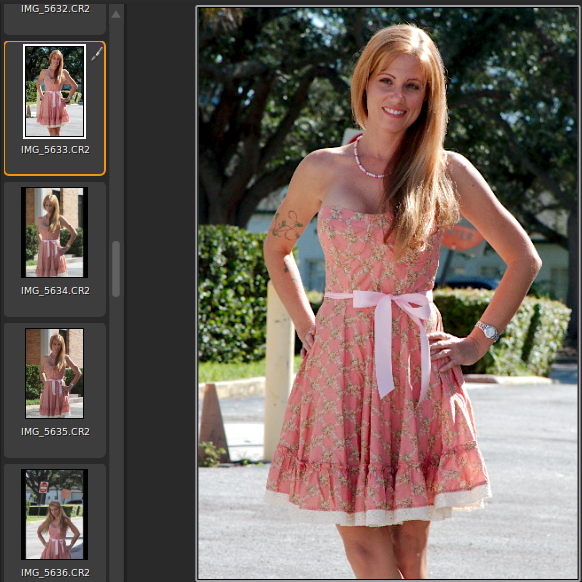Free Photography Bundle ($180 value): PS actions, LR presets, photo overlays, & print templates!
Get it here.
When you’re behind the camera sometimes it’s easy to lose perspective about what it’s like for the people in front of the camera. It’s not that hard to understand when you think about it; doing photography right takes a lot of focus. It’s not that you don’t have empathy for your models and subjects, it’s just that sometimes you’re a little too busy to give it much thought.
The mistakes new photographers make working with models are surprisingly consistent. I was lucky enough to marry a model and she is uniquely qualified to provide the perspective from in front of the camera. She was fortunate enough to work with photographer Brian Heston in Chicago on her early portfolio shots. After starting out with the best she can tell the amateur photographers from the pros in just a few minutes and these insights are the five biggest mistakes she sees new photographers make when working with talent.
1. Not Making Diverse Talent Choices
Photographers who pick the same kind of talent all the time are leaving money on the table and may be sending unintended messages.Sometimes you won’t have a choice about your talent. When you do have a choice, like when shooting commercial stock photography, go out of your way to make diverse selections. Choose male and female models, vary the age range from early 20’s to seniors, and make ethnically diverse choices. A popular trend these days is toward talent of mixed ethnicity or those whose ethnic background is not apparent from their looks. Advertisers want diversity so make model selections with that in mind.
2. Not Attempting to Calm the Talent’s Nerves
The first time working with a new photographer is like the first day on any new job. Even industry pros who have been modeling for years are going to be a little nervous walking in the door the first time. They don’t know you, are not familiar with the set and surroundings, and don’t always walk in with a clear idea of the project or expectations for that day.
One of the worst things you can do is let your talent sit or stand around while you go about setting up. Take two seconds to go introduce yourself and go over the plan for the shoot. If there are other crew working with you that day take a minute to introduce everyone. You’ll have time to finish your set up while the talent is with hair and the MUA. If your talent is doing their own hair and makeup, then make sure you have a lighted table with a mirror for them to work.
3. Not Being Clear About The Job
Nothing will make talent less enthused about showing up for a project than a description like, “I want to use the Japanese gardens as a backdrop.” What does that mean? You should have definite goals for each project and be clear about them when advertising the job.
Spending a couple minutes understanding what your talent wants to get out of the photoshoot is also well worth your time.
If you’re shooting on location, be sure to include a map in the project package or an address that shows up on GPS. If you’re expecting your talent to POV to the location then also list where parking is available if it’s an urban set, a very big deal in some cities. Talent should be clear on the job, dress required if they’re wearing their own clothes, the place, the time and enough of the logistics they don’t have to guess.
4. Not Paying Your Talent
Yes, I know there’s a long history of talent new to the business not charging for their time and getting photos in exchange. That’s been the business model as long as I’ve been alive but in these days of declining wealth, part-time jobs with low pay, and expensive gasoline it’s time to consider at least chipping in enough to at least cover their gas and clothing. If you’re just starting out and on a Ramen Noodle budget yourself, be honest but still kick in something. Whatever you can spare.
You’ll be amazed at how $50 or $100 will raise the caliber of the talent you get and increase the likelihood they’ll actually show up. If the payment is portfolio shots then be clear about when they can expect their shots and the delivery format.
5. Expecting Talent To Read Your Mind
There’s nothing that will rob your talent of enthusiasm faster than a quiet photographer. You should have a steady stream of dialog going the entire time you’re shooting. The better the results you’re seeing in the camera, the more excited and effusive your praise should be. Talent will do the best job when they’re confident and confidence comes from knowing they’re doing a great job and look fantastic.
One thing you’ll discover in photography is that very few people advertising themselves as models actually know how to pose and those who do are getting outrageously high day rates. Be prepared to be really specific at first and give your talent a few minutes to relax and get an idea what you’re looking for. I notice the good shots don’t start coming until after you’ve been shooting 10 or 15 minutes, sometimes longer.
Another trick is to ask if your talent has a signature look or pose. I’ll let you in on a secret, they all have one pose they’ve practiced in front of a mirror a hundred times. For my wife that’s an S curve. Letting your talent show off their move, even if it’s not exactly what you’re looking for, is a great way to loosen things up. Be sure and include one of those shots in the final delivery.
After looking this over the wife wanted to throw in a couple more bullet points, but I had to cut it off somewhere. Really all this can be summed by treating your talent like human beings with feelings and respecting their time. Be clear about the project and what you’re trying to accomplish and provide continuous feedback while you’re working.






